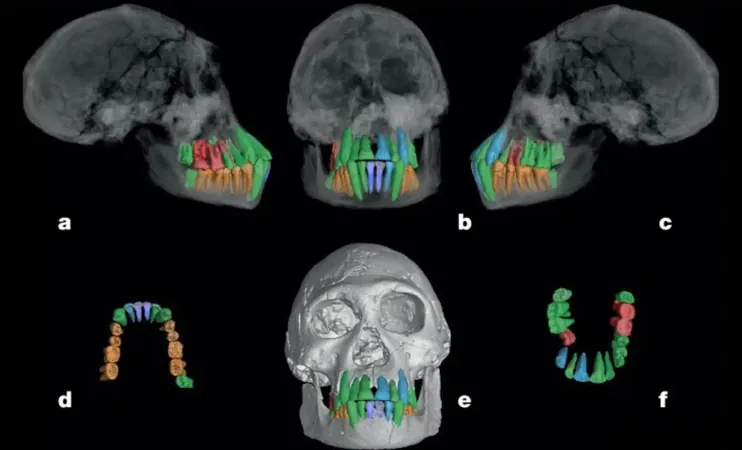
Groundbreaking Discovery: Fossil Teeth from an 11-Year-Old Sheds Light on Ancient Human Childhood
2024-11-26
Author: Ying
Groundbreaking Discovery: Fossil Teeth from an 11-Year-Old Sheds Light on Ancient Human Childhood
Recent research has unveiled that fossilized teeth belonging to a young hominid, approximately 1.77 million years old, have the potential to reshape our understanding of early human development. These unique remains were uncovered at the archaeological site of Dmanisi in Georgia, a location that has been instrumental in unearthing secrets about human ancestry.
The Hidden Insights Within Ancient Fossils
The fossilized teeth belonged to an 11-year-old from the genus Homo and display an intriguing pattern of growth. Scientists have discovered that, in the initial years of life, these teeth demonstrate a slower growth trajectory akin to that of modern human children. Surprisingly, after reaching eight years of age, the growth pattern accelerated to one more closely resembling that of great apes like chimpanzees. This transitional growth suggests that this young individual might have reached dental maturity between the ages of 12 and 13.5, a crucial period in the transition to adulthood.
Paleoanthropologist Christoph Zollikofer, who led the study at the University of Zurich, highlighted the significance of understanding this extended childhood phase. Humans engage in prolonged social learning, allowing them to adapt and thrive in complex environments—something that sets us apart from great apes, who reach maturity much quicker, with Zollikofer humorously noting they would have "barely time to go to kindergarten."
Advanced Techniques Illuminate the Past
Utilizing groundbreaking imaging technologies such as X-ray microtomography, researchers meticulously examined these ancient teeth. The growth lines found within the molars serve as a record of developmental progress, similar to tree rings, revealing a timeline of growth that has never before been explored for Homo fossils.
Key findings include: - ***Gradual Growth***: The teeth showcased human-like growth patterns in the first four years of life. - ***Shift to Rapid Growth***: Post-four years, a shift occurred towards a faster, ape-like growth rate, culminating in dental maturity by the time the individual reached their early teenage years.
These remarkable fossils were part of a near-complete skull discovered in 2001, which allowed scientists to reconstruct the dental history of this youth comprehensively.
What This Means for Understanding Human Evolution
This discovery is pivotal in debates about human evolution, particularly regarding childhood development durations. Historically, a slow growth pattern has been linked to larger brain sizes in modern humans. However, findings suggest that this extended childhood phase might have originated even before significant brain expansion took place.
Debbie Guatelli-Steinberg, a paleoanthropologist at Ohio State University, emphasized the excitement surrounding these revelations because they imply early Homo species needed more time to hone their social skills.
Ongoing Mysteries and Future Research
Despite the importance of these findings, experts urge caution in making absolute claims about the implications. Kevin Kuykendall from the University of Sheffield notes that slow dental development could derive from factors beyond brain size or social learning, including dietary influences and weaning ages.
Future research, such as analyses of chemical signatures in tooth enamel, could further dissect the complexities of human development through time. This recent study is just the beginning as we inch closer to unearthing more about the origins of childhood and social development in our early ancestors.
This remarkable discovery forces us to reevaluate what we know about our past. The simple fossilized remains of teeth remind us that every piece of our evolutionary puzzle holds the potential for profound revelations about the human journey.




 Brasil (PT)
Brasil (PT)
 Canada (EN)
Canada (EN)
 Chile (ES)
Chile (ES)
 España (ES)
España (ES)
 France (FR)
France (FR)
 Hong Kong (EN)
Hong Kong (EN)
 Italia (IT)
Italia (IT)
 日本 (JA)
日本 (JA)
 Magyarország (HU)
Magyarország (HU)
 Norge (NO)
Norge (NO)
 Polska (PL)
Polska (PL)
 Schweiz (DE)
Schweiz (DE)
 Singapore (EN)
Singapore (EN)
 Sverige (SV)
Sverige (SV)
 Suomi (FI)
Suomi (FI)
 Türkiye (TR)
Türkiye (TR)